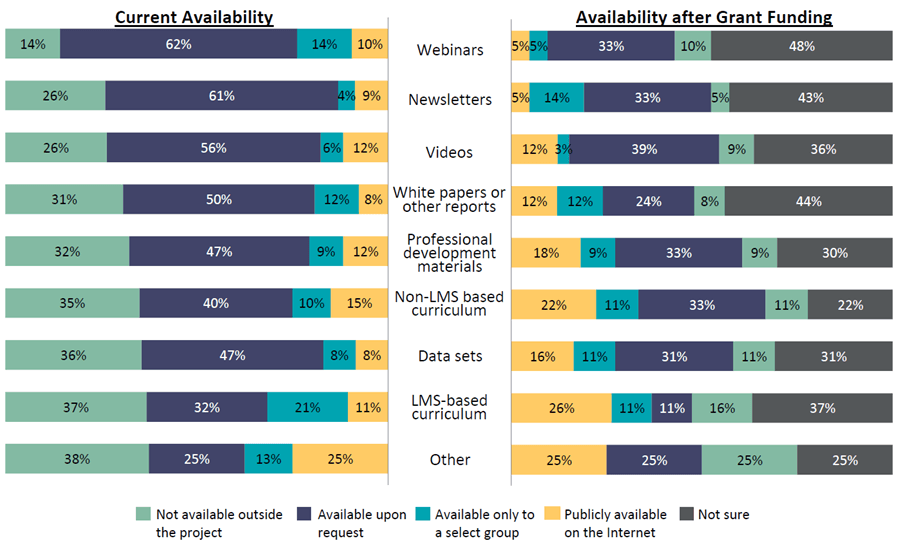As most ATE community members are aware, the National Science Foundation requires that all grant applicants provide a one- to two-page data management plan describing how the grantee’s proposal will meet NSF guidelines on the dissemination of grant-funded work. In 2014, NSF added a new requirement to the ATE solicitation mandating that newly funded grantees archive their deliverables with ATE Central.
We were curious to find out more about the materials created within the ATE community. So, when EvaluATE approached us about including questions related to data management planning and archiving in their annual survey of ATE grantees, we jumped at the chance. We had an interest in discovering not only what resources have been created, but also how those resources are disseminated to larger audiences. Additionally, we hoped to discover whether grantees are actively making their materials web accessible to users with disabilities—a practice that ensures access by the broadest possible audience.
The survey responses highlight that the most widely created materials include (not surprisingly) curriculum and professional development materials, with newsletters and journal articles taking up the rear. Other materials created by the ATE community include videos, white papers and reports, data sets, and webinars.
However, although grantees are creating a lot of valuable resources, they may not be sharing them widely and, in some cases, may be unsure of how best to make them available after funding ends. The graphs below illustrate the available of these materials, both currently and after grant funding ends.

Data from the annual survey shows that 65 percent of respondents are aware of accessibility standards—specifically Section 508 of the Rehabilitation Act; however, 35 percent are not. Forty-eight percent of respondents indicated that some or most of their materials are accessible, while another 22 percent reported that all materials generated by their project or center adhere to accessibility standards. Happily, only 1 percent of respondents reported that their materials do not adhere to standards; however, 29 percent are unsure whether their materials adhere to those standards or not.
For more information about accessibility, visit the official Section 508 site, the World Wide Web Consortium’s (W3C) Accessibility section or the Web Content Accessibility Guidelines 2.0 area of W3C.
Many of us struggle with issues related to sustaining our resources, which is part of the reason we are all asked by NSF to create a data management plan. To help PIs plan for long-term access, ATE Central offers an assortment of free services. Specifically, ATE Central supports data management planning efforts, provides sustainability training, and archives materials created by ATE projects and centers, ensuring access to these materials beyond the life of the project or center that created them.
For more about ATE Central, check out our suite of tools, services, and publications or visit our website. If you have questions or comments, contact us at info@atecentral.net.

Except where noted, all content on this website is licensed under a Creative Commons Attribution-NonCommercial-ShareAlike 4.0 International License.






 EvaluATE is supported by the National Science Foundation under grant numbers 0802245, 1204683, 1600992, and 1841783. Any opinions, findings, and conclusions or recommendations expressed on this site are those of the authors and do not necessarily reflect the views of the National Science Foundation.
EvaluATE is supported by the National Science Foundation under grant numbers 0802245, 1204683, 1600992, and 1841783. Any opinions, findings, and conclusions or recommendations expressed on this site are those of the authors and do not necessarily reflect the views of the National Science Foundation.